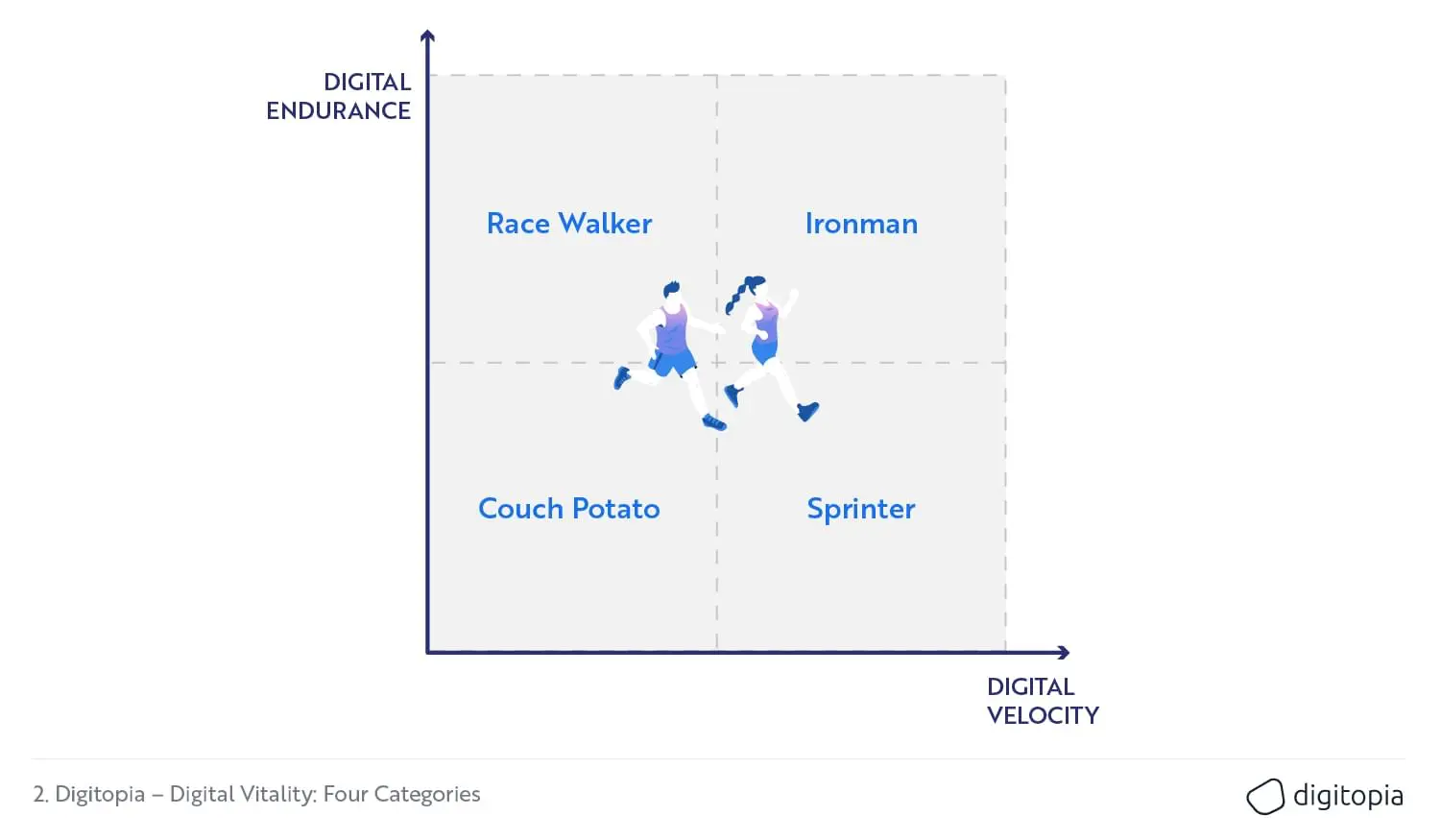
In today’s rapidly evolving business landscape, where volatility, uncertainty, complexity, and ambiguity (VUCA) have become the norm rather than the exception, defining and executing a robust business strategy is more challenging and crucial than ever. As business professionals and executives, you are steering your organizations through uncharted waters, where the waves of change are relentless, and the winds of technological advancement are swift. This article is dedicated to dissecting the art and science of strategy definition and its execution amidst these turbulent times.
The journey of strategic navigation in a VUCA world is threefold. First, it requires a keen understanding of how to define a strategy that is not only sound in today’s context but also adaptable for tomorrow’s uncertainties. This involves anticipating future trends, understanding emerging market dynamics, and aligning organizational capabilities to seize opportunities while mitigating risks. Second, the execution of this strategy demands more than just a well-laid plan; it calls for agile leadership, a culture of adaptability, and the ability to mobilize resources swiftly and effectively. Finally, and perhaps most critically, lies the continuous course correction – the ability to read the signs, both external and internal, and pivot the strategy as needed without losing sight of the ultimate goals.
The Imperative of Strategic Clarity
In a world characterized by uncertainty, the definition of a clear and coherent strategy is not just a business necessity; it’s a survival imperative. A well-defined strategy serves as a north star, guiding an organization through the fog of market changes, technological disruptions, and competitive pressures. It provides a framework for decision-making, resource allocation, and prioritization, ensuring that every action taken aligns with the overarching goals and vision of the organization.
Methods for Crafting a Robust Strategy
The landscape of business today is fraught with disruptive forces, making the definition of an effective strategy more critical than ever. The challenge, however, lies in choosing the right approach to strategy formulation in an environment marked by high levels of VUCA. This section delves into several proven methods for crafting robust strategies. From the visionary foresight of Scenario Planning to the comprehensive market analysis of Porter’s Five Forces, these methodologies offer diverse lenses through which businesses can navigate and thrive in today’s dynamic landscape. Understanding and applying these strategies can empower organizations to not only withstand but also capitalize on the rapid changes characterizing modern markets.
Scenario Planning: This involves envisioning various future scenarios based on different combinations of possible events. By preparing for multiple outcomes, companies can develop flexible strategies that can adapt to a range of future environments.
SWOT Analysis: Standing for Strengths, Weaknesses, Opportunities, and Threats, this tool helps in understanding the internal and external factors that can impact the organization’s success.
Blue Ocean Strategy: This approach focuses on creating new market spaces (blue oceans) rather than competing in existing ones (red oceans). It encourages innovation and looking beyond current industry boundaries.
Porter’s Five Forces: A framework for analyzing an industry’s competitive forces and shaping a strategy accordingly. It includes evaluating the threat of new entrants, the bargaining power of suppliers and customers, the threat of substitute products, and the intensity of competitive rivalry.
Famous Examples of Strategic Definition
The true testament to the power of a well-defined strategy lies in its real-world application and the success stories it breeds. In this section, we explore some of the most iconic examples of strategic definition and execution in recent business history. These case studies span various industries and market conditions, demonstrating how Apple, Netflix, Amazon, and Tesla have not only adapted to change but have often been the catalysts for it. Their stories provide invaluable insights into how a clear and adaptable strategy can lead to groundbreaking innovation and industry leadership. Each of these companies showcases the remarkable potential of strategic thinking in transforming challenges into opportunities and ideas into revolutions.
Apple Inc.: Apple’s strategy of continuous innovation and focus on design and user experience has helped it to create and dominate new markets, from personal computing to smartphones.
Netflix: Initially a DVD rental service, Netflix’s strategic pivot to online streaming and original content production transformed the entertainment industry, capitalizing on the shift towards digital consumption.
Amazon: Starting as an online bookstore, Amazon’s strategy has evolved to include diverse areas like cloud computing, AI, and logistics. Their focus on customer experience and efficient supply chain management has been central to their success.
Tesla: Tesla’s strategy to start with high-end electric vehicles and gradually move to more affordable models disrupted the automotive industry and accelerated the adoption of electric vehicles.
In each of these cases, the companies recognized the importance of a clearly defined strategy that not only addressed current market needs but was also flexible enough to adapt to changing circumstances. Their success underscores the value of strategic clarity and adaptability in a VUCA world, where the ability to anticipate, react, and evolve can make the difference between thriving and merely surviving.
What is Your Strategy?
Surprisingly, in the complex tapestry of modern business, the gap between having a ‘strategy’ and truly understanding and executing it remains wide and problematic. Many companies and executives proudly tout their strategic plans, yet often these plans are either not robust enough to be effective or they fail to be properly actualized. This critical disconnect between strategy formulation and execution can lead to stagnation and missed opportunities, even in organizations with great potential. In this section, we delve into the nuances that differentiate a strong, actionable strategy from mere aspirations. We’ll explore the common pitfalls that prevent strategies from materializing into results and offer insights on how organizations can bridge the gap between strategic planning and effective execution, ensuring that their strategic vision is not just a statement on paper but a driving force behind tangible success.
Misunderstanding Strategy: Often, what is labeled as a ‘strategy’ is merely a set of goals or objectives, without a clear plan for achieving them. A true strategy involves a coherent set of actions and choices that distinctly position the organization in its industry, addressing how it will create and capture value over time.
Lack of Alignment: A strategy may be well-defined, but if it’s not fully understood or embraced by everyone in the organization, from the C-suite to the front line, execution will falter. Alignment ensures that every department and employee understands their role in achieving the strategic goals.
Inadequate Resources or Capabilities: Execution fails when the organization doesn’t have the necessary resources or capabilities. This might include financial resources, human talent, technological infrastructure, or operational capabilities.
Resistance to Change: Organizations often underestimate the cultural and behavioral changes needed to implement a new strategy. Resistance from employees, especially if they don’t understand the reasons behind the change or if they fear it will negatively impact them, can severely hamper execution.
Lack of Flexibility: In a rapidly changing business environment, strategies need to be dynamic. A rigid strategy that doesn’t allow for course correction in response to market shifts or new opportunities can quickly become obsolete.
Poor Monitoring and Adaptation: Many organizations fail to effectively monitor the progress of their strategic initiatives and are slow to adapt when situations change. Continuous monitoring and a willingness to tweak the strategy as needed are crucial for success.
To address these challenges, it’s essential for organizations to not only develop a clear, coherent, and realistic strategy but also to ensure it is effectively communicated and implemented across all levels of the organization. Regular reviews and adaptations of the strategy, aligned with changing market dynamics and internal capabilities, are also vital for maintaining its relevance and effectiveness.
Beyond Logic: Unveiling the Emotional Currents in Strategic Decision-Making
It’s a common declaration among businesses and their leaders: ‘We are highly analytical in our approach.’ Yet, in the intricate dance of strategy definition, execution, and prioritization, the reality often skews more towards the emotional than many would like to admit. This emotional undercurrent, though seldom acknowledged openly, plays a significant role in how strategies are formulated and executed. In this section, we will delve into the subtle yet profound impact of emotional biases and sentiments on strategic decision-making. By unraveling this often overlooked aspect, we aim to shed light on why some strategies, despite being analytically sound, may falter in execution or why certain strategic priorities are chosen over others. This exploration is crucial for leaders who seek not only to understand the logical framework of their strategies but also to grasp the emotional dynamics that could influence their successful implementation.
Introducing the Digital Vitality Quadrant: A New Paradigm for Digital Transformation Strategy
In an era where digital transformation is not just an option but a necessity for survival and growth, business leaders are constantly seeking effective frameworks to guide their digital journey. The concept of ‘Digital Vitality’ emerges as a groundbreaking tool, offering a fresh perspective on strategizing and prioritizing digital transformation initiatives. At the heart of this concept lies the Digital Vitality Map, a strategic tool that combines two critical dimensions: Digital Velocity and Digital Endurance.

The horizontal axis, Digital Velocity, represents the speed at which an organization can adapt to digital changes and innovations. It measures the agility of a business in implementing new digital technologies and processes, and how swiftly it can respond to digital trends and market demands.
On the vertical axis, we find Digital Endurance, which signifies the long-term sustainability of digital initiatives. This dimension assesses how well a company’s digital strategies are integrated with its core business model and values, ensuring that digital transformation efforts contribute to long-term growth and resilience.
By positioning your organization within this map, you can gain insightful perspectives on where you stand in terms of digital transformation – whether you are rapidly adapting but lacking sustainability, or if you have enduring strategies but are slow to implement change. This tool serves as a crucial guide for companies to refine their digital transformation strategies and to prioritize their investment portfolio, ensuring a balanced approach to achieving both immediate impact and long-term digital vitality.
Using this framework, executives can make more informed decisions about where to focus their efforts and investments in the digital realm, leading to more effective and sustainable digital transformation outcomes.
Digital Vitality in Action: Defining, Aligning, and Executing Your Digital Strategy
As the digital landscape continues to evolve at a breakneck pace, businesses are increasingly recognizing the need for a strategic approach to digital transformation. However, it’s not just about embracing digital technologies; it’s about integrating them into the very fabric of your organization’s strategy. The Digital Vitality concept provides a framework for this integration, focusing on Digital Velocity and Digital Endurance. In this section, we delve into three key recommendations to maximize your organization’s digital vitality: Defining your strategy with precision, ensuring your investments and decisions are in harmony with this strategy, and executing your strategy with unwavering focus and diligence. These steps are critical in navigating the digital era, ensuring that your organization doesn’t just survive but thrives in the face of constant change.
Define Your Strategy Properly
The foundation of any successful digital transformation is a well-defined strategy. This involves a deep understanding of your organization’s core objectives, market dynamics, customer needs, and technological capabilities. A properly defined strategy articulates how digital initiatives will drive value, how they align with broader business goals, and how success will be measured. This clarity is essential for guiding your entire organization through the transformation journey.
Align Investments and Decisions with Your Strategy
Once your digital strategy is in place, every investment and decision must be evaluated against it. This alignment is crucial to ensure that resources are efficiently utilized and that each initiative contributes to the strategic objectives. It requires a disciplined approach to budgeting, resource allocation, and project selection, always with the strategy as the guiding light. This alignment not only optimizes resource use but also ensures coherence and synergy across different digital initiatives.
Consciously and Diligently Execute Your Strategy
The best-laid plans are only as good as their execution. This stage is about translating strategy into action. It demands meticulous planning, agile execution, and continuous monitoring. Execution should be adaptive, allowing for course corrections as market conditions and technological landscapes evolve. It also involves cultivating a culture that embraces digital change, encouraging innovation, and fostering skills development across the organization. Effective execution is the key to realizing the envisioned digital transformation.
In summary, by meticulously defining, aligning, and executing your digital strategy, your organization can harness the full potential of digital transformation. This holistic approach ensures that your journey towards digital vitality is not only strategically sound but also adaptable and sustainable in the long run.



